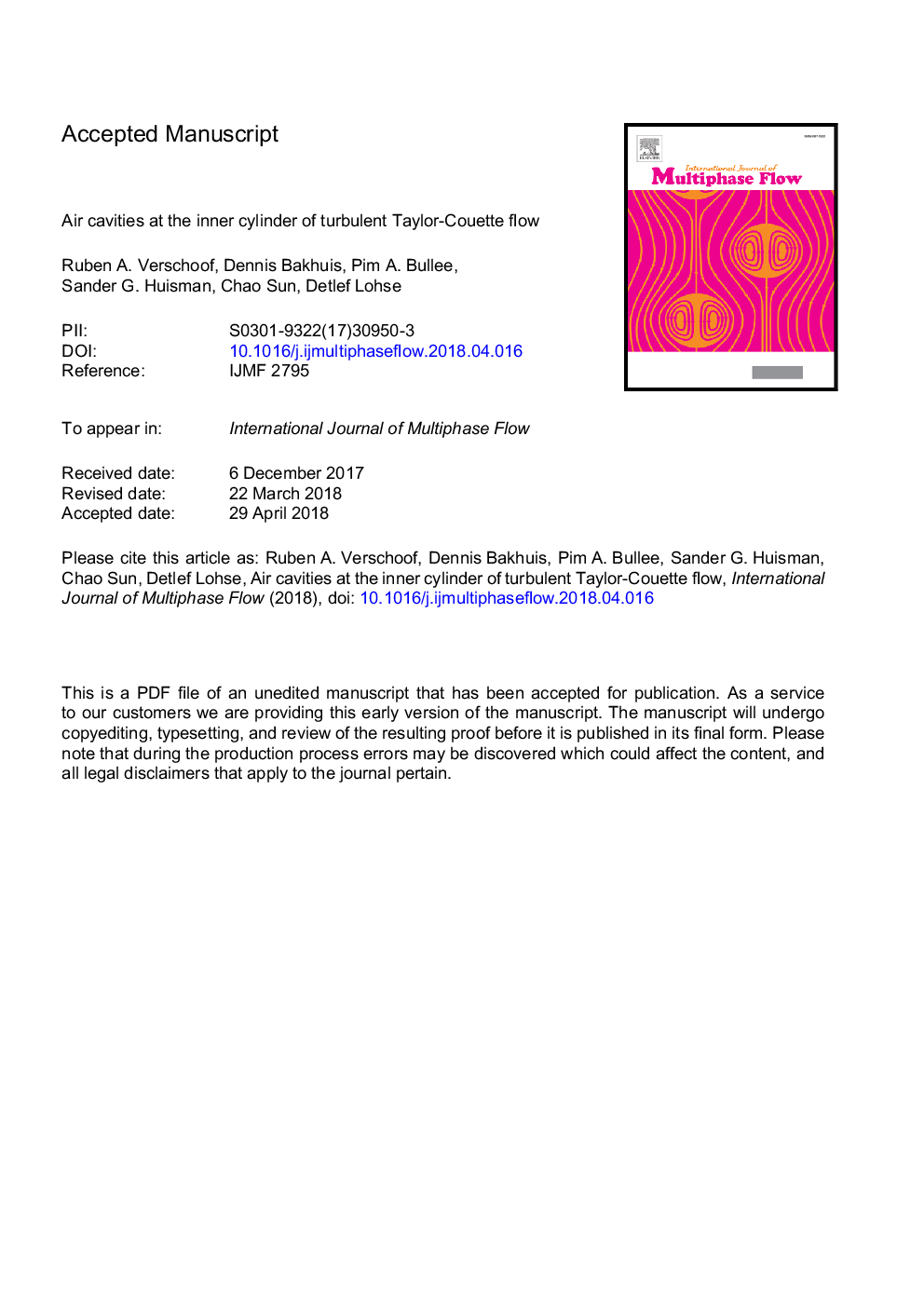| کد مقاله | کد نشریه | سال انتشار | مقاله انگلیسی | نسخه تمام متن |
|---|---|---|---|---|
| 7060085 | 1458473 | 2018 | 19 صفحه PDF | دانلود رایگان |
عنوان انگلیسی مقاله ISI
Air cavities at the inner cylinder of turbulent Taylor-Couette flow
ترجمه فارسی عنوان
حفره های هوا در سیلندر داخلی جریان آشفته تیلور کوئت
دانلود مقاله + سفارش ترجمه
دانلود مقاله ISI انگلیسی
رایگان برای ایرانیان
کلمات کلیدی
حفره های هوا، تیلور کویت جریان، آشفتگی، چند فاز جریان دارد کاهش کشیدن،
موضوعات مرتبط
مهندسی و علوم پایه
مهندسی شیمی
جریان سیال و فرایندهای انتقال
چکیده انگلیسی
Air cavities, i.e. air layers developed behind cavitators, are seen as a promising drag reducing method in the maritime industry. Here we utilize the Taylor-Couette (TC) geometry, i.e. the flow between two concentric, independently rotating cylinders, to study the effect of air cavities in this closed setup, which is well-accessible for drag measurements and optical flow visualizations. We show that stable air cavities can be formed, and that the cavity size increases with Reynolds number and void fraction. The streamwise cavity length strongly depends on the axial position due to buoyancy forces acting on the air. Strong secondary flows, which are introduced by a counter-rotating outer cylinder, clearly decrease the stability of the cavities, as air is captured in the Taylor rolls rather than in the cavity. Surprisingly, we observed that local air injection is not necessary to sustain the air cavities; as long as air is present in the system it is found to be captured in the cavity. We show that the drag is decreased significantly as compared to the case without air, but with the geometric modifications imposed on the TC system by the cavitators. As the void fraction increases, the drag of the system is decreased. However, the cavitators itself significantly increase the drag due to their hydrodynamic resistance (pressure drag): In fact, a net drag increase is found when compared to the standard smooth-wall TC case. Therefore, one must first overcome the added drag created by the cavitators before one obtains a net drag reduction.
ناشر
Database: Elsevier - ScienceDirect (ساینس دایرکت)
Journal: International Journal of Multiphase Flow - Volume 105, August 2018, Pages 264-273
Journal: International Journal of Multiphase Flow - Volume 105, August 2018, Pages 264-273
نویسندگان
Ruben A. Verschoof, Dennis Bakhuis, Pim A. Bullee, Sander G. Huisman, Chao Sun, Detlef Lohse,
